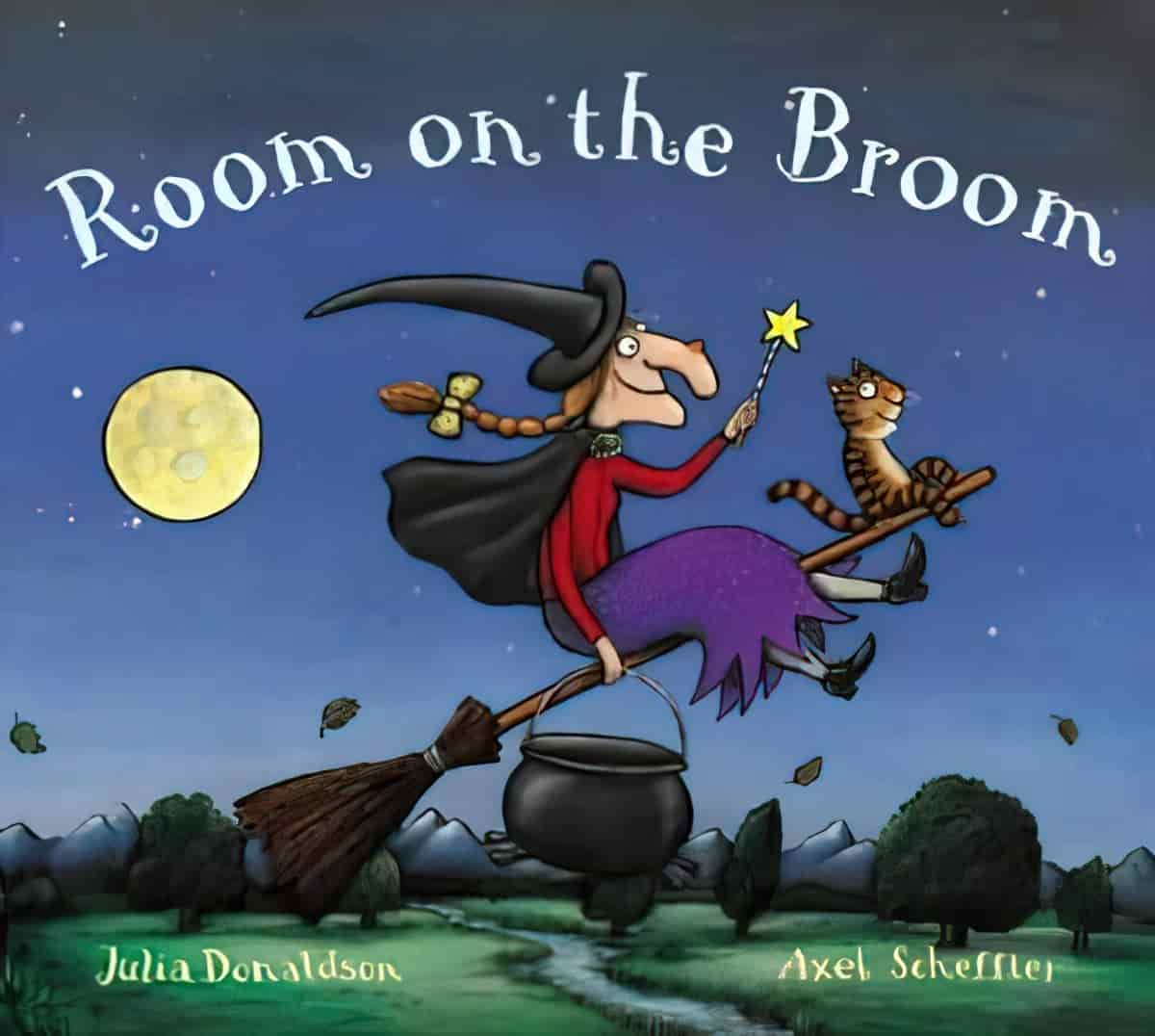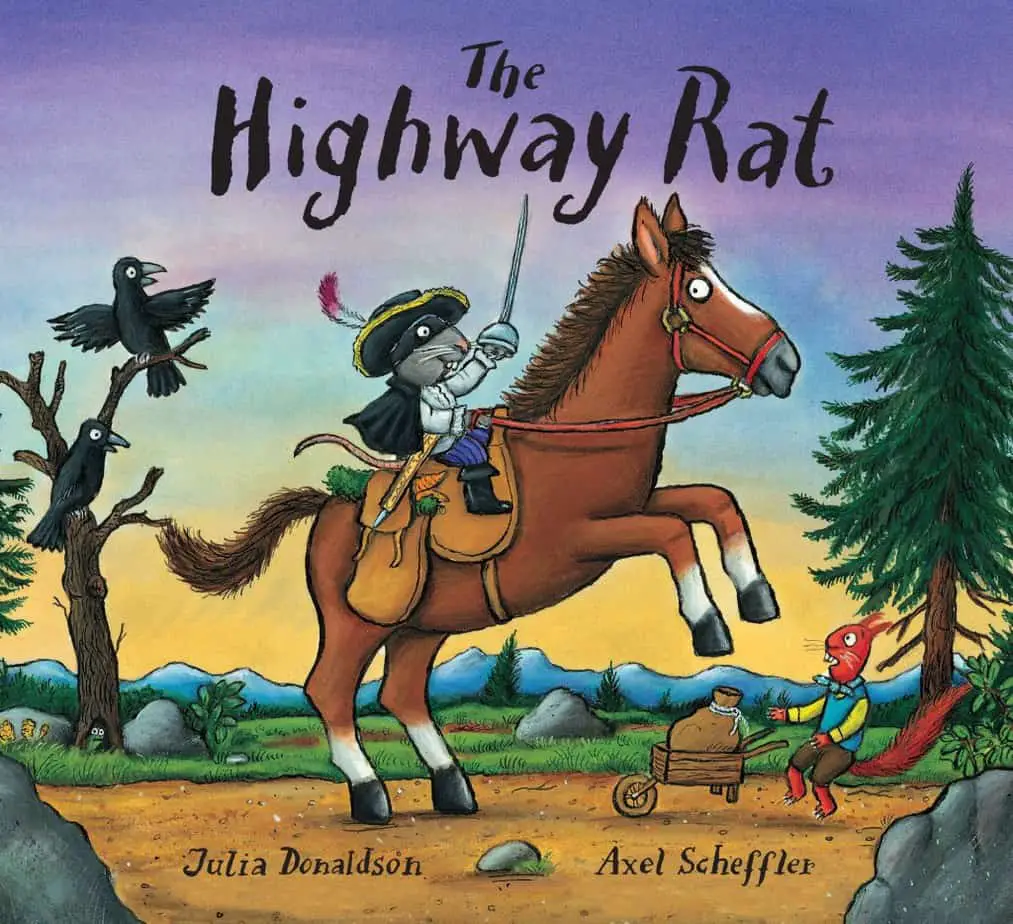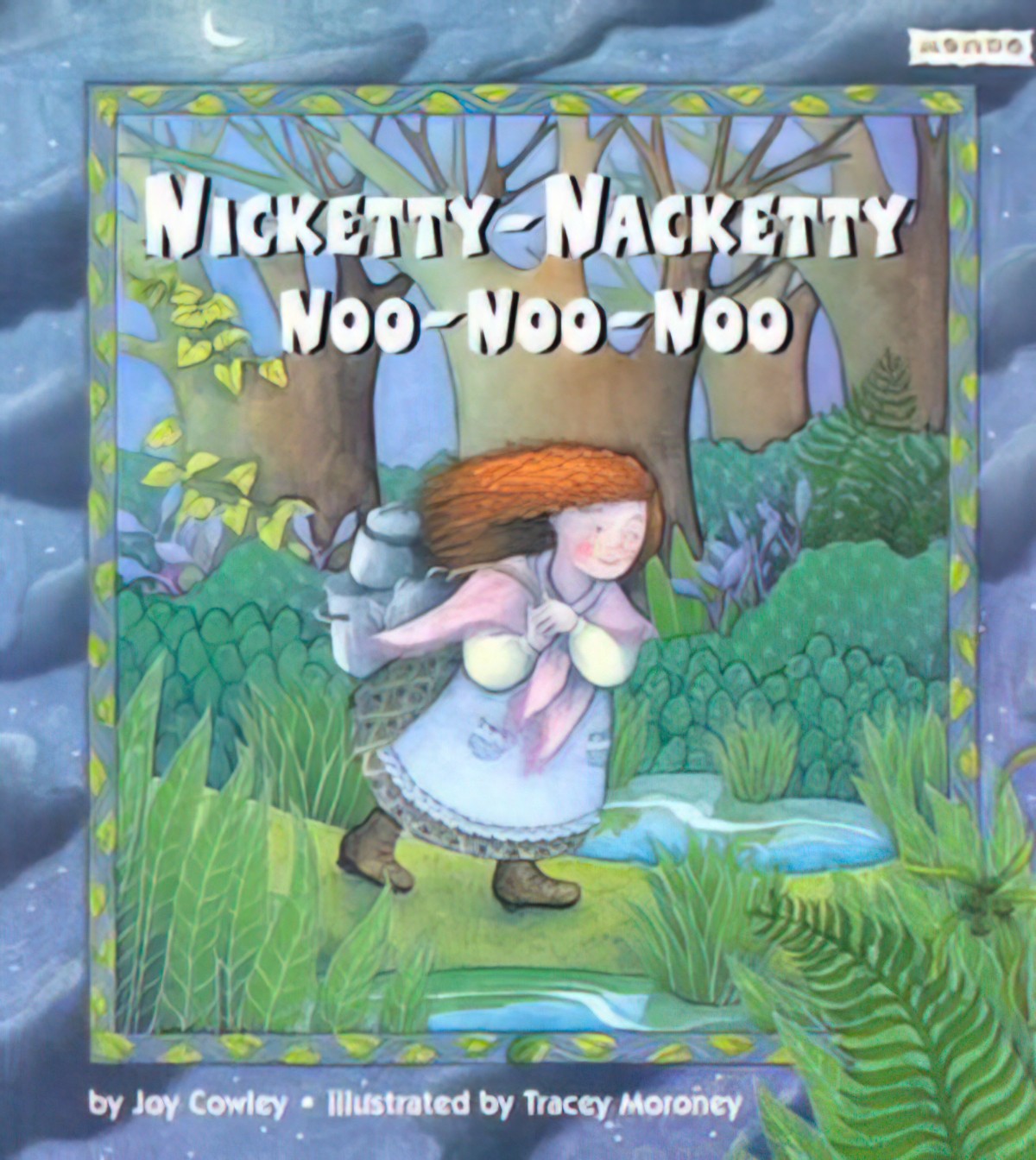Nicketty Nacketty Noo Noo Noo (1998) is a picture book with strong Scottish influence, written by Joy Cowley — one of New Zealand’s big name children’s authors.
There once was an ogre called Gobbler MagooHere’s a lighthearted tale with rhythmic text about an ogre named Gobbler Magoo whose bad behavior and ill-temper have really gotten him in a stew. Readers will cheer when his captive gets her gluey revenge!
MARKETING COPY
As a child of the 80s, I grew up reading Joy Cowley, whose books were purchased as class sets, and whose work could be found on the shelves of any primary school library. As a child who grew up in Motueka and Nelson, Joy Cowley was also a local writer, and though I didn’t realise it at the time, provided an essential local balance to this kid who was in love with Enid Blyton and Roald Dahl. The Terrible Taniwha of Timberditch, published in 1982, is one book that left a lasting impression on me, mainly because it was terrifying!
This particular picture book is not distinctively New Zealand in flavour, unless you consider that ‘Scottish’ is New Zealand’s most commonly listed heritage across the population. In Nickety Nackety Noo Noo Noo, Cowley has drawn upon a Scottish poetic tradition to create an otherworldly story populated with ogres and so on.
WHAT HAPPENS IN NICKETTY NACKETTY NOO NOO NOO
A ‘wee wishy woman’ is kidnapped by an ogre, who takes her to his lair. She is ordered to cook for him. So she happily cooks the stew and watches him eat it. But the wee wishy woman turns out to be a trickster, and has cooked the stew with glue. She manages to escape because the ogre is all gummed up, unable to chase her.
WONDERFULNESS OF NICKETTY NACKETTY NOO NOO NOO
This story is a rhyming poem for children written in the tradition of a traditional Scottish poem such as The Wee Cooper O’Fife.
The Wee Cooper O’ Fife
There was a wee cooper who lived in Fife
Nickety nackety noo, noo. noo
And he has tae’n a gentle wife
Hey Willy Wallacky, hoo John Dougal,
Alane, quo’ Rushity, roo, roo, roo.She wouldna card and she wouldna spin
Nickety nackety noo, noo. noo
For shamin’ o’her gentle kin
Hey Willy Wallacky, hoo John Dougal,
Alane, quo’ Rushity, roo, roo, roo.She wouldna bake and she wouldna brew
Nicketty nackety noo, noo. noo
For spoilin’ of her gentle hue
Hey Willy Wallacky, hoo John Dougal,
Alane, quo’ Rushity, roue, roue, roue.She called him a dirty Hieland whelp
Nicketty nackety noo, noo. noo
If you want yer dinner go get it yourself
Hey Willy Wallacky, hoo John Dougal,
Alane, quo’ Rushity, roo, roo, roo.The cooper’s awa tae his wool-pack
Nicketty nackety noo, noo. noo
And lain a sheepskin across her back
Hey Willy Wallacky, hoo John Dougal,
Alane, quo’ Rushity, roo, roo, roo.I’ll no thrash you, for your gentle kin
Nicketty nackety noo, noo. noo
But I will thrash my ain sheep-skin
Hey Willy Wallacky, hoo John Dougal,
Alane, quo’ Rushity, roo, roo, roo.He’s laid the sheepskin across her back
Nicketty nackety noo, noo. noo
And with a good stick he went whickety-whack
Hey Willy Wallacky, hoo John Dougal,
Alane, quo’ Rushity, roo, roo, roo.Oh I will card and I will spin
Nicketty nackety noo, noo. noo
And think nae mair of my gentle kin!
Hey Willy Wallacky, hoo John Dougal,
Alane, quo’ Rushity, roo, roo, roo.She drew the table and spread the board
Nicketty nackety noo, noo. noo
And “My dear husband” was every word
Hey Willy Wallacky, hoo John Dougal,
Alane, quo’ Rushity, roo, roo, roo.All you who have gotten a gentle wife
Nicketty nackety noo, noo. noo
Just send ye for the cooper of Fife!
Hey Willy Wallacky, hoo John Dougal,
Alane, quo’ Rushity, roo, roo, roo.
Another example of such a song is Rissetly Russtley, performed here by Pete Seeger.
A closer look at the lyrics of both songs makes me think Joy Cowley may have been slightly annoyed with this tradition, which is written from the ‘ogre’s’ point of view. These are songs sung by a man complaining about how his wife doesn’t do the housework properly and doesn’t keep herself pretty enough. Although the songs are obviously hyperbolic, there is nonetheless a long history of husbands complaining about their wives (and vice versa, if you listen to R&B sung by American women from the mid 20th C). Cowley may have wondered what it might look like from the wife’s point of view. In that sense, the children’s story is a feminist tale.
I married a wife in the month of June,
Risselty rosselty, now now now!
I carried her off by the light of the moon (in a silver spoon)
Risselty rosselty, hey bombosity, nicketty nackety,
retrical quality, willaby wallaby now now now!She combed her hair but once a year,
Risselty rosselty, now now now!
With every rake she gave a tear,
Risselty rosselty, hey bombosity, (etc.)She swept the floor but once a year,
Risselty rosselty, now now now!
She swore her broom was much too dear,
Risselty rosselty, hey bombosity, (etc.)She churned the butter in dad’s old boot,
Risselty rosselty, now now now!
And for a dasher she uses her foot,
Risselty rosselty, hey bombosity, (etc.)The butter came out a grizzledy gray,
Risselty rosselty, now now now!
The cheese took legs and ran away,
Risselty rosselty, hey bombosity, (etc.)(Peggy Seeger)
The butter and cheese is on the shelf,
Risselty rosselty, now now now!
If you want any more you can sing it yourself,
Risselty rosselty, hey bombosity, (etc.)
NOTES ON THE ILLUSTRATION OF NICKETTY NACKETTY NOO NOO NOO
Since this is inspired by traditional works of art, some of the features of a classic (or at least ‘old’) book have been employed, namely the decision to place illustrations within a ‘frame’ rather than extend them to the edge of each page. In effect, you end up with a border of white around each illustration. Sometimes there is a separate ornate border, and I’m guessing the patterns in those might be based upon some traditional Scottish architecture or something. Since modern printing technologies no longer require illustration plates to be surrounded by a border of white space, visual interest has been added with decorative illustrations of vegetation which extends off the page. Here, the pot extends beyond the border:
STORY SPECS OF NICKETTY NACKETTY NOO NOO NOO
Published 1996 by Scholastic
32pp
Typeset in 20/24pt Times. The later reprinting of the book has a different font on its cover. I’m always interested to see how publishers vary their covers from printing to printing, but of course we’re never told why! (I suppose the font might have had a limited licence?)
Unlike many picture books, the pages of this book are numbered, on pages where the illustration doesn’t obscure where the page number would go.
Joy Cowley is herself New Zealand European, and like most of us from New Zealand (including many Maori), has some Scottish blood in there somewhere.
Tracey Moroney seems to more commonly go by Trace Moroney. Her website is here.
COMPARE AND CONTRAST
The world of this picture book could be set in the same ‘world’ as Julia Donaldson’s Room On The Broom, which includes supernatural creatures who, like their fairytale equivalents, can be outwitted by savvy young humans. The blues and greens of Tracey Moroney’s colour scheme are somewhat similar to the style chosen by Axel Scheffler six years later.

Julia Donaldson, like Joy Cowley, sometimes makes use of traditional poetry as inspiration for her picture books. The Highway Rat is a good example of that. (See The Highwayman by Alfred Noyes.)

WRITE YOUR OWN BASED ON NICKETY NACKETY NOO NOO NOO
Though I’m sure it’s way harder than it looks, we might try taking a traditional poem from Scotland, turning the story on its head and make use of the rhythm and rhyming conventions to create a story for a young, modern audience.

